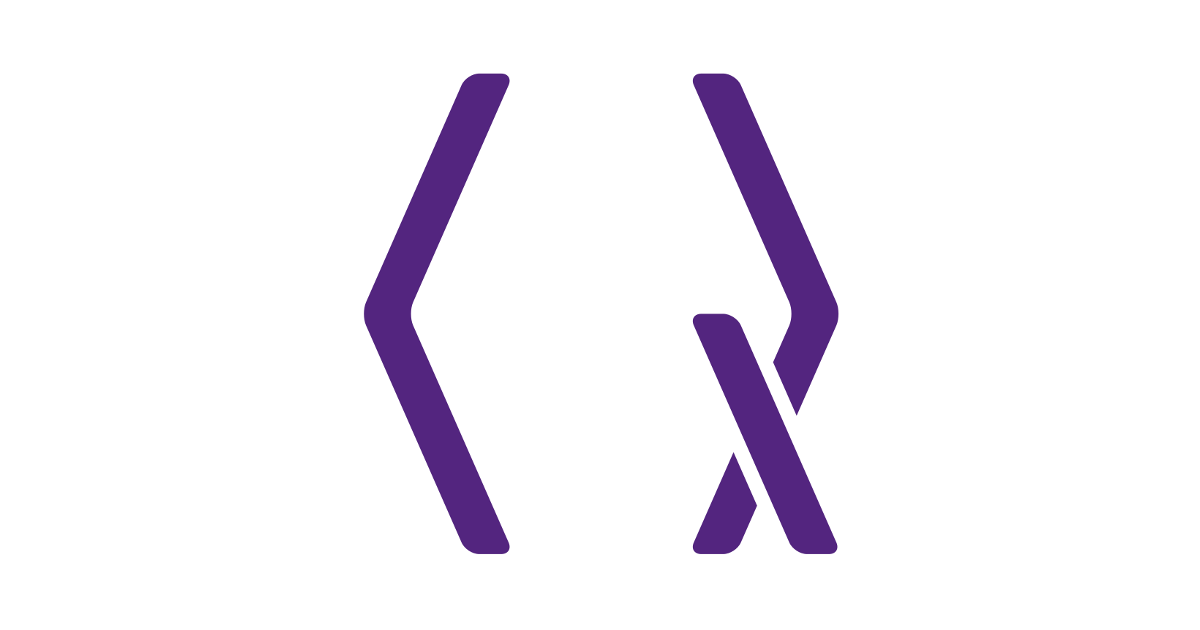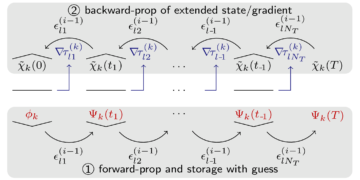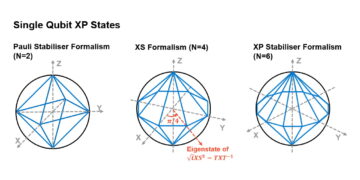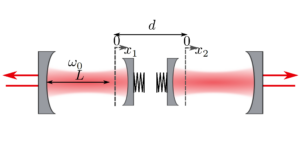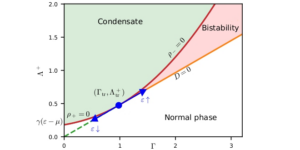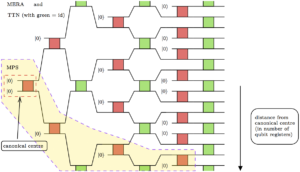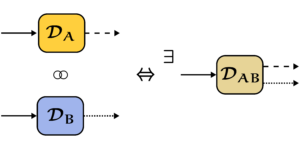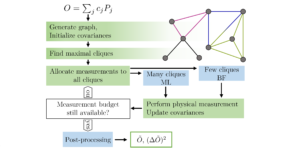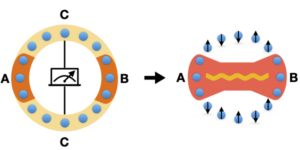1Joint Center for Quantum Information and Computer Science, University of Maryland
2Department of Computer Science, University of Maryland
3Institut for Matematik, University of Maryland
4Center on Frontiers of Computing Studies, Peking University
5School of Computer Science, Peking University
6Center for Teoretisk Fysik, Massachusetts Institute of Technology
7Institut for tværfaglig informationsvidenskab, Tsinghua University
Finder du denne artikel interessant eller vil du diskutere? Scite eller efterlade en kommentar på SciRate.
Abstrakt
Kvantesimulering er en fremtrædende anvendelse af kvantecomputere. Mens der er omfattende tidligere arbejde med at simulere finit-dimensionelle systemer, er der mindre kendt om kvantealgoritmer til dynamik i det virkelige rum. Vi udfører en systematisk undersøgelse af sådanne algoritmer. Vi viser især, at dynamikken i en $d$-dimensionel Schrödinger-ligning med $eta$-partikler kan simuleres med gatekompleksitet $tilde{O}bigl(eta d F text{poly}(log(g'/epsilon) )bigr)$, hvor $epsilon$ er diskretiseringsfejlen, $g'$ styrer de højere-ordens afledte af bølgefunktionen, og $F$ måler den tidsintegrerede styrke af potentialet. Sammenlignet med de bedste tidligere resultater forbedrer dette eksponentielt afhængigheden af $epsilon$ og $g'$ fra $text{poly}(g'/epsilon)$ til $text{poly}(log(g'/epsilon))$ og forbedrer polynomielt afhængigheden af $T$ og $d$, mens den bedst kendte ydeevne bibeholdes med hensyn til $eta$. I tilfælde af Coulomb-interaktioner giver vi en algoritme, der bruger $eta^{3}(d+eta)Ttext{poly}(log(eta dTg'/(Deltaepsilon)))/Delta$ en- og to-qubit-porte, og en anden, der bruger $eta^{3}(4d)^{d/2}Ttext{poly}(log(eta dTg'/(Deltaepsilon)))/Delta$ en- og to-qubit-gates og QRAM-operationer, hvor $ T$ er udviklingstiden, og parameteren $Delta$ regulerer den ubegrænsede Coulomb-interaktion. Vi giver applikationer til flere beregningsmæssige problemer, herunder hurtigere real-space simulering af kvantekemi, streng analyse af diskretiseringsfejl til simulering af en ensartet elektrongas og en kvadratisk forbedring af en kvantealgoritme til at undslippe saddelpunkter i ikke-konveks optimering.
Populært resumé
► BibTeX-data
► Referencer
[1] Dong An, Di Fang og Lin Lin, Tidsafhængig Hamiltoniansk simulering af meget oscillerende dynamik, 2021, arXiv:2111.03103.
https://doi.org/10.22331/q-2022-04-15-690
arXiv:arXiv:2111.03103
[2] Joran van Apeldoorn, András Gilyén, Sander Gribling og Ronald de Wolf, Konveks optimering ved hjælp af kvanteorakler, Quantum 4 (2020), 220, arXiv:1809.00643 https://doi.org/10.22331/q-2020 01-13-220.
https://doi.org/10.22331/q-2020-01-13-220
arXiv:arXiv:1809.00643
[3] Alán Aspuru-Guzik, Anthony D. Dutoi, Peter J. Love og Martin Head-Gordon, Simuleret kvanteberegning af molekylære energier, Science 309 (2005), nr. 5741, 1704-1707, arXiv:quant-ph/0604193 https://doi.org/10.1126/science.1113479.
https://doi.org/10.1126/science.1113479
arXiv:quant-ph/0604193
[4] Ryan Babbush, Dominic W. Berry, Ian D. Kivlichan, Annie Y. Wei, Peter J. Love og Alán Aspuru-Guzik, Eksponentielt mere præcis kvantesimulering af fermioner i anden kvantisering, New Journal of Physics 18 (2016), nr. . 3, 033032, arXiv:1506.01020 https:///dx.doi.org/10.1088/1367-2630/18/3/033032.
https://doi.org/10.1088/1367-2630/18/3/033032
arXiv:arXiv:1506.01020
[5] Ryan Babbush, Dominic W. Berry, Jarrod R. McClean og Hartmut Neven, Kvantesimulering af kemi med sublineær skalering i basisstørrelse, Npj Quantum Information 5 (2019), nr. 1, 1-7, arXiv:1807.09802 https://doi.org/10.1038/s41534-019-0199-y.
https:///doi.org/10.1038/s41534-019-0199-y
arXiv:arXiv:1807.09802
[6] Ryan Babbush, Dominic W. Berry, Yuval R. Sanders, Ian D. Kivlichan, Artur Scherer, Annie Y. Wei, Peter J. Love og Alán Aspuru-Guzik, Eksponentielt mere præcis kvantesimulering af fermioner i konfigurationsinteraktionsrepræsentationen, Quantum Science and Technology 3 (2017), nr. 1, 015006, arXiv:1506.01029 https:///dx.doi.org/10.1088/2058-9565/aa9463.
https:///doi.org/10.1088/2058-9565/aa9463
arXiv:arXiv:1506.01029
[7] Ryan Babbush, Jarrod McClean, Dave Wecker, Alán Aspuru-Guzik og Nathan Wiebe, Kemisk grundlag for Trotter-Suzuki fejl i kvantekemi simulering, Physical Review A 91 (2015), nr. 2, 022311, arXiv:1410.8159 https://doi.org/10.1103/PhysRevA.91.022311.
https:///doi.org/10.1103/PhysRevA.91.022311
arXiv: 1410.8159
[8] Ryan Babbush, Nathan Wiebe, Jarrod McClean, James McClain, Hartmut Neven og Garnet Kin-Lic Chan, Low-depth quantum simulation of materials, Physical Review X 8 (2018), nr. 1, 011044, arXiv:1706.00023 https://doi.org/10.1103/PhysRevX.8.011044.
https:///doi.org/10.1103/PhysRevX.8.011044
arXiv:arXiv:1706.00023
[9] Josh Barnes og Piet Hut, En hierarkisk ${O}(n log n)$ kraftberegningsalgoritme, natur 324 (1986), nr. 6096, 446-449 https://doi.org/10.1038/324446a0.
https:///doi.org/10.1038/324446a0
[10] Bela Bauer, Sergey Bravyi, Mario Motta og Garnet Kin-Lic Chan, Kvantealgoritmer for kvantekemi og kvantematerialevidenskab, Chemical Reviews 120 (2020), nr. 22, 12685-12717, arXiv:2001.03685 https://doi.org/10.1021/acs.chemrev.9b00829.
https:///doi.org/10.1021/acs.chemrev.9b00829
arXiv: 2001.03685
[11] Robert Beals, Stephen Brierley, Oliver Gray, Aram W. Harrow, Samuel Kutin, Noah Linden, Dan Shepherd og Mark Stather, Efficient distributed quantum computing, Proceedings of the Royal Society A 469 (2013), nr. 2153, 20120686, arXiv:1207.2307 https://doi.org/10.1098/rspa.2012.0686.
https:///doi.org/10.1098/rspa.2012.0686
arXiv:arXiv:1207.2307
[12] Dominic W. Berry, Graeme Ahokas, Richard Cleve og Barry C. Sanders, Effektive kvantealgoritmer til simulering af sparsomme Hamiltonianere, Communications in Mathematical Physics 270 (2007), 359–371, arXiv:quant-ph/0508139 https:/ /doi.org/10.1007/s00220-006-0150-x.
https:///doi.org/10.1007/s00220-006-0150-x
arXiv:quant-ph/0508139
[13] Dominic W. Berry, Andrew M. Childs, Richard Cleve, Robin Kothari og Rolando D Somma, Simulering af Hamiltonsk dynamik med en trunkeret Taylor-serie, Physical Review Letters 114 (2015), nr. 9, 090502, arXiv:1412.4687 https://doi.org/10.1103/PhysRevLett.114.090502.
https:///doi.org/10.1103/PhysRevLett.114.090502
arXiv:arXiv:1412.4687
[14] Dominic W. Berry, Andrew M. Childs, Yuan Su, Xin Wang og Nathan Wiebe, Tidsafhængig Hamiltoniansk simulering med ${L}^{1}$-normskalering, Quantum 4 (2020), 254, arXiv:1906.07115 https:///doi.org/10.22331/q-2020-04-20-254.
https://doi.org/10.22331/q-2020-04-20-254
arXiv:arXiv:1906.07115
[15] Dominic W. Berry, Craig Gidney, Mario Motta, Jarrod R. McClean og Ryan Babbush, Qubitization of arbitrary basis quantum chemistry leveraging sparsity and low rank factorization, Quantum 3 (2019), 208, arXiv:1902.02134 https:// doi.org/10.22331/q-2019-12-02-208.
https://doi.org/10.22331/q-2019-12-02-208
arXiv: 1902.02134
[16] Jean Bourgain, Om vækst af Sobolev-normer i lineære Schrödinger-ligninger med jævnt tidsafhængigt potentiale, Journal d'Analyse Mathématique 77 (1999), nr. 1, 315–348 https:///doi.org/10.1007/BF02791265.
https:///doi.org/10.1007/BF02791265
[17] John P. Boyd, Chebyshev og Fourier spektralmetoder, Courier Corporation, 2001.
[18] Susanne C. Brenner og L. Ridgway Scott, The matematical theory of finite element methods, vol. 3, Springer, 2008 https:///doi.org/10.1007/978-0-387-75934-0.
https://doi.org/10.1007/978-0-387-75934-0
[19] Earl Campbell, tilfældig kompilator til hurtig Hamilton-simulering, Physical Review Letters 123 (2019), nr. 7, 070503, arXiv:1811.08017 https://doi.org/10.1103/PhysRevLett.123.070503.
https:///doi.org/10.1103/PhysRevLett.123.070503
arXiv: 1811.08017
[20] Yudong Cao, Jonathan Romero, Jonathan P. Olson, Matthias Degroote, Peter D. Johnson, Mária Kieferová, Ian D. Kivlichan, Tim Menke, Borja Peropadre, Nicolas PD Sawaya, et al., Quantum chemistry in the age of quantum computing, Chemical Reviews 119 (2019), nr. 19, 10856-10915, arXiv:1812.09976 https://doi.org/10.1021/acs.chemrev.8b00803.
https:///doi.org/10.1021/acs.chemrev.8b00803
arXiv: 1812.09976
[21] Shouvanik Chakrabarti, Andrew M. Childs, Tongyang Li og Xiaodi Wu, Kvantealgoritmer og nedre grænser for konveks optimering, Quantum 4 (2020), 221, arXiv:1809.01731 https://doi.org/10.22331 -2020-01-13-221.
https://doi.org/10.22331/q-2020-01-13-221
arXiv:arXiv:1809.01731
[22] Andrew M. Childs, Quantum information processing in continuous time, Ph.D. afhandling, Massachusetts Institute of Technology, 2004.
[23] Andrew M. Childs og Robin Kothari, Limitations on the simulation of non-sparse Hamiltonians, Quantum Information & Computation 10 (2010), no. 7, 669–684, arXiv:0908.4398 https://doi.org/10.26421/QIC10.7-8-7.
https:///doi.org/10.26421/QIC10.7-8-7
arXiv:arXiv:0908.4398
[24] Andrew M. Childs, Jin-Peng Liu og Aaron Ostrander, Højpræcisions kvantealgoritmer til partielle differentialligninger, Quantum 5 (2021), 574, arXiv:2002.07868 https://doi.org/10.22331/ -2021-11-10-574.
https://doi.org/10.22331/q-2021-11-10-574
arXiv:arXiv:2002.07868
[25] Andrew M. Childs, Dmitri Maslov, Yunseong Nam, Neil J. Ross og Yuan Su, Toward the first quantum simulation with quantum speedup, Proceedings of the National Academy of Sciences 115 (2018), nr. 38, 9456–9461, arXiv:1711.10980 https://doi.org/10.1073/pnas.1801723115.
https:///doi.org/10.1073/pnas.1801723115
arXiv:arXiv:1711.10980
[26] Andrew M. Childs, Yuan Su, Minh C. Tran, Nathan Wiebe og Shuchen Zhu, Theory of Trotter error with commutator scaling, Physical Review X 11 (2021), no. 1, 011020, arXiv:1912.08854 https://doi.org/10.1103/PhysRevX.11.011020.
https:///doi.org/10.1103/PhysRevX.11.011020
arXiv:arXiv:1912.08854
[27] Andrew M. Childs og Nathan Wiebe, Hamiltonsk simulering ved hjælp af lineære kombinationer af enhedsoperationer, Quantum Information & Computation 12 (2012), nr. 11-12, 901-924, arXiv:1202.5822 https:///doi.org/10.26421/QIC12.11-12-1.
https:///doi.org/10.26421/QIC12.11-12-1
arXiv:arXiv:1202.5822
[28] Yann N. Dauphin, Razvan Pascanu, Caglar Gulcehre, Kyunghyun Cho, Surya Ganguli og Yoshua Bengio, Identifikation og angreb af saddelpunktsproblemet i højdimensionel ikke-konveks optimering, Advances in Neural Information Processing Systems, s. 2933-2941, 2014, arXiv:1406.2572.
arXiv:arXiv:1406.2572
[29] Richard P. Feynman, Simulering af fysik med computere, International Journal of Theoretical Physics 21 (1982), nr. 6, 467-488 https://doi.org/10.1007/BF02650179.
https:///doi.org/10.1007/BF02650179
[30] Yan V. Fyodorov og Ian Williams, Replica symmetri breaking condition afsløret ved tilfældig matrixberegning af landskabskompleksitet, Journal of Statistical Physics 129 (2007), nr. 5-6, 1081-1116, arXiv:cond-mat/0702601 https:///doi.org/10.1007/s10955-007-9386-x.
https:///doi.org/10.1007/s10955-007-9386-x
arXiv:arXiv:cond-mat/0702601
[31] András Gilyén, Yuan Su, Guang Hao Low og Nathan Wiebe, Quantum singular value transformation and beyond: eksponentielle forbedringer for kvantematrixaritmetik, Proceedings of the 51st Annual ACM SIGACT Symposium on Theory of Computing, s. 193–204, 2019Xiv. :1806.01838 https://doi.org/10.1145/3313276.3316366.
https:///doi.org/10.1145/3313276.3316366
arXiv:arXiv:1806.01838
[32] Gabriele Giuliani og Giovanni Vignale, Kvanteteori om elektronvæsken, Cambridge University Press, 2005 https://doi.org/10.1017/CBO9780511619915.
https:///doi.org/10.1017/CBO9780511619915
[33] Leslie Greengard og Vladimir Rokhlin, En hurtig algoritme til partikelsimuleringer, Journal of Computational Physics 73 (1987), nr. 2, 325–348 https:///doi.org/10.1016/0021-9991(87)90140-9.
https://doi.org/10.1016/0021-9991(87)90140-9
[34] Jeongwan Haah, Matthew Hastings, Robin Kothari og Guang Hao Low, Kvantealgoritme til simulering af realtidsudvikling af Hamilton-gitter, Proceedings of the 59th Annual Symposium on Foundations of Computer Science, pp. https://doi.org/350/360M2018.
https:///doi.org/10.1137/18M1231511
arXiv:arXiv:1801.03922
[35] Matthew B. Hastings, Dave Wecker, Bela Bauer og Matthias Troyer, Improving quantum algorithms for quantum chemistry, Quantum Information & Computation 15 (2015), nr. 1-2, 1-21, arXiv:1403.1539 https://doi.org/10.26421/QIC15.1-2-1.
https:///doi.org/10.26421/QIC15.1-2-1
arXiv: 1403.1539
[36] Francis Begnaud Hildebrand, Introduktion til numerisk analyse, Courier Corporation, 1987 https://doi.org/10.1007/978-0-387-21738-3.
https://doi.org/10.1007/978-0-387-21738-3
[37] Chi Jin, Praneeth Netrapalli og Michael I. Jordan, Accelereret gradientnedstigning undslipper saddelpunkter hurtigere end gradientnedstigning, Conference on Learning Theory, s. 1042–1085, 2018, arXiv:1711.10456.
arXiv:arXiv:1711.10456
[38] Shi Jin, Xiantao Li og Nana Liu, Kvantesimulering i det semi-klassiske regime, Quantum 6 (2022), 739 arXiv:2112.13279 https:///doi.org/10.22331/q-2022-06-17 -739.
https://doi.org/10.22331/q-2022-06-17-739
arXiv:arXiv:2112.13279
[39] Stephen P. Jordan, Hurtig kvantealgoritme til numerisk gradientestimering, Physical Review Letters 95 (2005), nr. 5, 050501, arXiv:quant-ph/0405146 https:///doi.org/10.1103/PhysRevLett.95.050501.
https:///doi.org/10.1103/PhysRevLett.95.050501
arXiv:arXiv:quant-ph/0405146
[40] Stephen P. Jordan, Keith SM Lee og John Preskill, Kvantealgoritmer til kvantefeltteorier, Science 336 (2012), nr. 6085, 1130-1133, arXiv:1111.3633 https://doi.org/10.1126/science.1217069.
https://doi.org/10.1126/science.1217069
arXiv:arXiv:1111.3633
[41] Ivan Kassal, Stephen P. Jordan, Peter J. Love, Masoud Mohseni og Alán Aspuru-Guzik, Polynomial-time kvantealgoritme til simulering af kemisk dynamik, Proceedings of the National Academy of Sciences 105 (2008), nr. 48, 18681-18686, arXiv:0801.2986 https://doi.org/10.1073/pnas.0808245105.
https:///doi.org/10.1073/pnas.0808245105
arXiv: 0801.2986
[42] Ian D. Kivlichan, Nathan Wiebe, Ryan Babbush og Alán Aspuru-Guzik, Bounding the cost of quantum simulation of many-body physics in real space, Journal of Physics A: Mathematical and Theoretical 50 (2017), nr. 30, 305301, arXiv:1608.05696 https:///dx.doi.org/10.1088/1751-8121/aa77b8.
https://doi.org/10.1088/1751-8121/aa77b8
arXiv:arXiv:1608.05696
[43] Joonho Lee, Dominic Berry, Craig Gidney, William J. Huggins, Jarrod R. McClean, Nathan Wiebe og Ryan Babbush, Endnu mere effektive kvanteberegninger af kemi gennem tensorhyperkontraktion, PRX Quantum 2 (2021), nr. 3, 030305, arXiv:2011.03494 https://doi.org/10.1103/PRXQuantum.2.030305.
https:///doi.org/10.1103/PRXQuantum.2.030305
arXiv: 2011.03494
[44] Seth Lloyd, Universal quantum simulators, Science (1996), 1073–1078 https:///doi.org/10.1126/science.273.5278.1073.
https://doi.org/10.1126/science.273.5278.1073
[45] Guang Hao Low og Isaac L. Chuang, Hamiltonsk simulering ved qubitization, Quantum 3 (2019), 163, arXiv:1610.06546 https:///doi.org/10.22331/q-2019-07-12-163.
https://doi.org/10.22331/q-2019-07-12-163
arXiv:arXiv:1610.06546
[46] Guang Hao Low og Nathan Wiebe, Hamiltonsk simulering i interaktionsbilledet, 2018, arXiv:1805.00675.
arXiv:arXiv:1805.00675
[47] Richard M. Martin, Electronic structure, Cambridge University Press, 2004 https:///doi.org/10.1017/CBO9780511805769.
https:///doi.org/10.1017/CBO9780511805769
[48] Sam McArdle, Earl Campbell og Yuan Su, Udnytter fermiontal i faktoriserede nedbrydninger af den elektroniske struktur Hamiltonian, Physical Review A 105 (2022), nr. 1, 012403, arXiv:2107.07238 https://doi.org/10.1103/PhysRevA.105.012403.
https:///doi.org/10.1103/PhysRevA.105.012403
arXiv:arXiv:2107.07238
[49] Jarrod R. McClean, Ryan Babbush, Peter J. Love og Alán Aspuru-Guzik, Udnyttelse af lokalitet i kvanteberegning til kvantekemi, The Journal of Physical Chemistry Letters 5 (2014), nr. 24, 4368-4380 https://doi.org/10.1021/jz501649m.
https://doi.org/10.1021/jz501649m
[50] Mario Motta, Erika Ye, Jarrod R. McClean, Zhendong Li, Austin J. Minnich, Ryan Babbush og Garnet Kin-Lic Chan, Lav rangrepræsentationer for kvantesimulering af elektronisk struktur, npj Quantum Information 7 (2021), nr. 1, 1-7, arXiv:1808.02625 https://doi.org/10.1038/s41534-021-00416-z.
https:///doi.org/10.1038/s41534-021-00416-z
arXiv:arXiv:1808.02625
[51] David Poulin, Matthew B. Hastings, David Wecker, Nathan Wiebe, Andrew C. Doberty og Matthias Troyer, The Trotter step size nødvendig for nøjagtig kvantesimulering af kvantekemi, Quantum Information & Computation 15 (2015), nr. 5-6, 361-384, arXiv:1406.4920 https://doi.org/10.26421/QIC15.5-6-1.
https:///doi.org/10.26421/QIC15.5-6-1
arXiv: 1406.4920
[52] John Preskill, Simulering af kvantefeltteori med en kvantecomputer, The 36th Annual International Symposium on Lattice Field Theory, vol. 334, s. 024, SISSA Medialab, 2019, arXiv:1811.10085 DOI: https:///doi.org/10.22323/1.334.0024.
https:///doi.org/10.22323/1.334.0024
arXiv: 1811.10085
[53] Markus Reiher, Nathan Wiebe, Krysta M. Svore, Dave Wecker og Matthias Troyer, Opklaring af reaktionsmekanismer på kvantecomputere, Proceedings of the National Academy of Sciences 114 (2017), nr. 29, 7555–7560, arXiv:1605.03590 https:///doi.org/10.1073/pnas.1619152114.
https:///doi.org/10.1073/pnas.1619152114
arXiv: 1605.03590
[54] Vivek Sarin, Ananth Grama og Ahmed Sameh, Analyzing the error bounds of multipole-based treecodes, SC'98: Proceedings of the 1998 ACM/IEEE Conference on Supercomputing, s. 19-19, IEEE, 1998 https:// doi.org/10.1109/SC.1998.10041.
https:///doi.org/10.1109/SC.1998.10041
[55] Jacob T. Seeley, Martin J. Richard og Peter J. Love, The Bravyi-Kitaev transformation for quantum computation of electronic structure, The Journal of Chemical Physics 137 (2012), nr. 22, 224109, arXiv:1208.5986 https://doi.org/10.1063/1.4768229.
https:///doi.org/10.1063/1.4768229
arXiv: 1208.5986
[56] Jie Shen og Tao Tang, Spectral and high-order methods with applications, Science Press Beijing, 2006, https:///www.math.purdue.edu/ shen7/sp_intro12/book.pdf.
https:///www.math.purdue.edu/~shen7/sp_intro12/book.pdf
[57] Bin Shi, Weijie J. Su og Michael I. Jordan, On learning rates and Schrödinger operators, 2020, arXiv:2004.06977.
arXiv:arXiv:2004.06977
[58] Yuan Su, Dominic W Berry, Nathan Wiebe, Nicholas Rubin og Ryan Babbush, Fejltolerante kvantesimuleringer af kemi i første kvantisering, PRX Quantum 2 (2021), nr. 4, 040332, arXiv:2105.12767 https://doi.org/10.1103/PRXQuantum.2.040332.
https:///doi.org/10.1103/PRXQuantum.2.040332
arXiv: 2105.12767
[59] Yuan Su, Hsin-Yuan Huang og Earl T. Campbell, Nearly tight Trotterization of interacting electronics, Quantum 5 (2021), 495, arXiv:2012.09194 https:///doi.org/10.22331/q-2021- 07-05-495.
https://doi.org/10.22331/q-2021-07-05-495
arXiv: 2012.09194
[60] Masuo Suzuki, Generel teori om fraktale sti-integraler med anvendelser til mange-legeme-teorier og statistisk fysik, Journal of Mathematical Physics 32 (1991), nr. 2, 400-407 https://doi.org/10.1063/1.529425.
https:///doi.org/10.1063/1.529425
[61] Barna Szabó og Ivo Babuška, Finite element analysis, John Wiley & Sons, 1991.
[62] Borzu Toloui og Peter J. Love, Kvantealgoritmer for kvantekemi baseret på sparsiteten af CI-matrixen, 2013, arXiv:1312.2579.
arXiv: 1312.2579
[63] Vera von Burg, Guang Hao Low, Thomas Häner, Damian S. Steiger, Markus Reiher, Martin Roetteler og Matthias Troyer, Quantum computing enhanced computational catalysis, Physical Review Research 3 (2021), nr. 3, 033055, arXiv:2007.14460 https://doi.org/10.1103/PhysRevResearch.3.033055.
https:///doi.org/10.1103/PhysRevResearch.3.033055
arXiv:arXiv:2007.14460
[64] Dave Wecker, Bela Bauer, Bryan K. Clark, Matthew B. Hastings og Matthias Troyer, Gate-count estimater for udførelse af kvantekemi på små kvantecomputere, Physical Review A 90 (2014), nr. 2, 022305, arXiv:1312.1695 https://doi.org/10.1103/PhysRevA.90.022305.
https:///doi.org/10.1103/PhysRevA.90.022305
arXiv: 1312.1695
[65] James D. Whitfield, Jacob Biamonte og Alán Aspuru-Guzik, Simulering af elektronisk struktur Hamiltonianere ved hjælp af kvantecomputere, Molecular Physics 109 (2011), nr. 5, 735–750, arXiv:1001.3855 https://doi.org/10.1080/00268976.2011.552441.
https:///doi.org/10.1080/00268976.2011.552441
arXiv: 1001.3855
[66] Stephen Wiesner, Simulations of many-body quantum systems by a quantum computer, 1996, arXiv:quant-ph/9603028.
arXiv:quant-ph/9603028
[67] Christof Zalka, Effektiv simulering af kvantesystemer med kvantecomputere, Fortschritte der Physik: Progress of Physics 46 (1998), nr. 6-8, 877-879, arXiv:quant-ph/9603026.
https:///doi.org/10.1098/rspa.1998.0162
arXiv:quant-ph/9603026
[68] Chenyi Zhang, Jiaqi Leng og Tongyang Li, Kvantealgoritmer til flugt fra saddelpunkter, Quantum 5 (2021), 529, arXiv:2007.10253v3 https://doi.org/10.22331/q-2021-08 20-529.
https://doi.org/10.22331/q-2021-08-20-529
arXiv:arXiv:2007.10253v3
[69] Chenyi Zhang og Tongyang Li, Undslippe saddelpunkter med en simpel gradient-nedstigningsbaseret algoritme, Advances in Neural Information Processing Systems, vol. 34, 2021, arXiv:2111.14069.
arXiv:arXiv:2111.14069
Citeret af
[1] Hans Hon Sang Chan, Richard Meister, Tyson Jones, David P. Tew og Simon C. Benjamin, "Grid-baserede metoder til kemisimuleringer på en kvantecomputer", arXiv: 2202.05864.
[2] Yonah Borns-Weil og Di Fang, "Ensartede observerbare fejlgrænser for Trotter-formler for den semiklassiske Schrödinger-ligning", arXiv: 2208.07957.
Ovenstående citater er fra SAO/NASA ADS (sidst opdateret 2022-11-18 02:43:41). Listen kan være ufuldstændig, da ikke alle udgivere leverer passende og fuldstændige citatdata.
On Crossrefs citeret af tjeneste ingen data om at citere værker blev fundet (sidste forsøg 2022-11-18 02:43:39).
Dette papir er udgivet i Quantum under Creative Commons Attribution 4.0 International (CC BY 4.0) licens. Ophavsretten forbliver hos de originale copyright-indehavere, såsom forfatterne eller deres institutioner.

